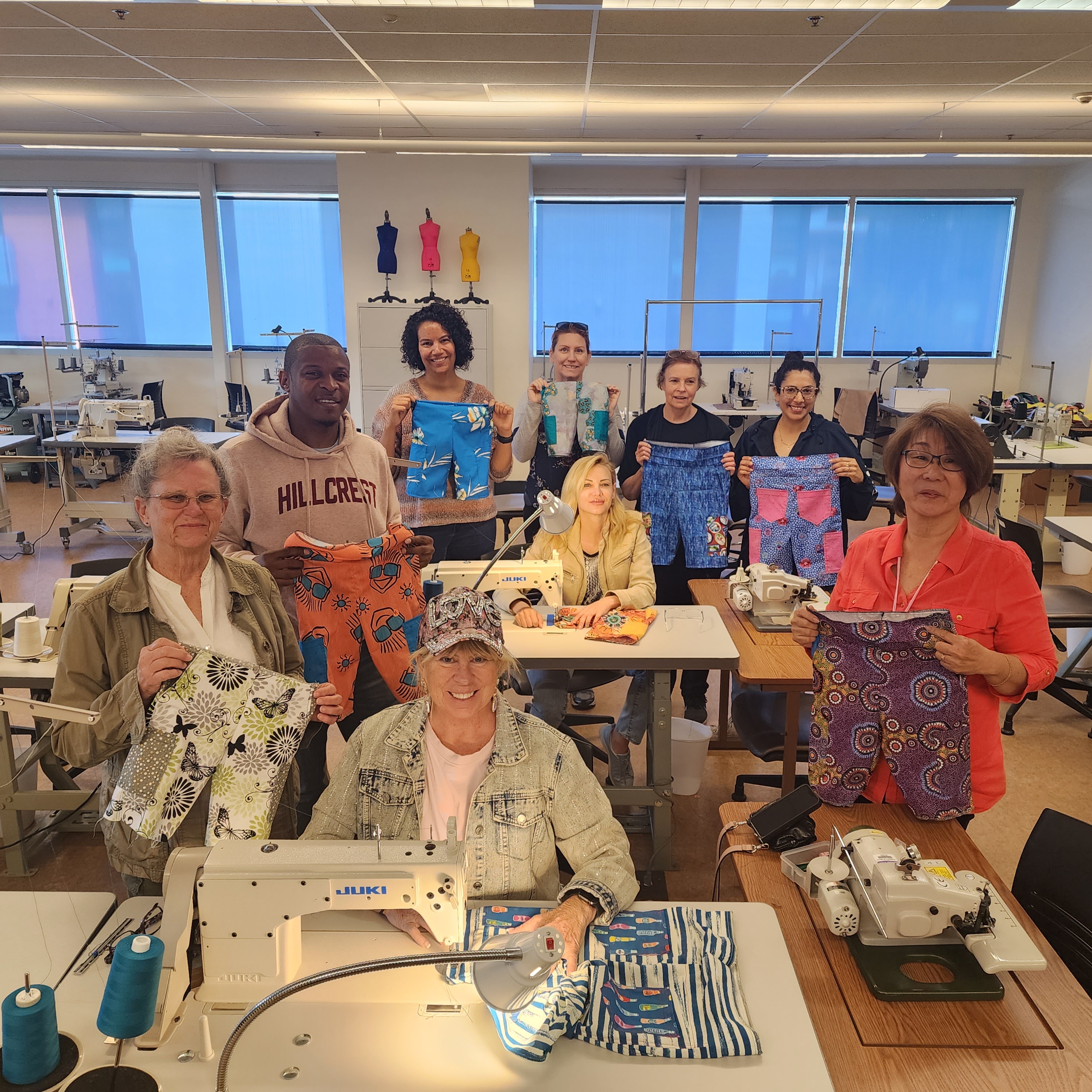Clothing and Textiles Digital Transformation Initiative: Building 21st Century Workforce Pathways
Submitted By: Jesus Rivas
San Diego Adult Education Regional Consortium
Website: https://sdcce.edu/job-training/clothing-textiles
Type of Practice: Program Development / Curriculum / Classroom
Program Area(s): CTE / Workforce Prep / Pre-apprenticeship
Region: San Diego - Imperial
Consortia Involved: San Diego Adult Education Regional Consortium
The Program of Practice
The Clothing and Textiles (CLTX) program at San Diego College of Continuing Education experienced a sharp decline in enrollment, productivity, retention, and student completion over a five-year period. Contributing factors included outdated curriculum, lack of digital equipment, contract faculty retirements that were not replaced, and the elimination of standalone sewing courses that previously drew high enrollment. With only one remaining contract faculty member, the program struggled to offer a robust learning environment or keep pace with the evolving demands of the textile industry and student demographics.
The Response
In response, the CLTX program underwent a comprehensive transformation between 2019 and 2024. This included a full curriculum redesign, resulting in 22 new courses and 8 state-approved certificate programs to be launched in Fall 2024. The department invested in digital and industrial-grade equipment through the Fiber Technology Lab (FTL) and the Industrial Sewing Lab, exposing students to industry-standard tools like 3D patterning software (CLO), laser etching, embroidery machines, and digital textile printing.
A phased renovation of lab spaces at the West City Campus provided modern infrastructure to support these upgrades. In addition, new adjunct faculty with digital competencies were hired, and strategies were put in place to address DEI by promoting gender-neutral instruction and inclusive syllabi.
Annual community engagement events like the “Big Make” brought visibility to the program and connected students with industry professionals, reinforcing real-world relevance and community-based learning.
The Unique Features of the Program
• Curriculum Innovation: Replaced outdated programs with 22 modern, technology-integrated courses aligned with industry 4.0/5.0 standards.
• Fiber Technology Lab (FTL): A student-centered micro-factory model featuring industry-grade digital manufacturing tools, providing hands-on experience for the digital cut-and-sew economy.
• Sustainability & Equity Focus: Embedded principles of environmental sustainability, cultural inclusion, and equitable practices in course design and department projects.
• Inclusive Language and Practices: Shifted from gendered language (e.g., "seamstress") to inclusive terms like "sewist"; designed gender-neutral projects.
• Workforce Integration: Partnerships with industry for LMI alignment and the development of the forthcoming Textile Product Innovator program.
• Community Engagement: The “Big Make” event engaged over 400 students and community members in hands-on sustainable textile practices.
• Modality Expansion: Transitioned to hybrid and online learning options, ensuring flexible access to technical instruction.
The Outcome
Despite historical declines in enrollment and completions, CLTX’s strategic redesign has set a new trajectory for success. Key data points reflecting promising turnaround include:
• FTES Rebound: Increased from 93.14 in 2022/23 to 100.92 in 2023/24.
• Demographic Gains: African American student headcount grew from 37 to 52 and male student headcount increased from 37 to 53 between 2021/22 and 2023/24.
• Stable Interest in Core Course: CLTX620 “Sewing Fundamentals” maintained stable FTES (~42) over five years.
• Community Impact: 192 students attended “Big Make” workshops in 2024, and 255 individuals participated in the capstone event. Student reflections cited greater awareness of sustainability, equity, and industry engagement.

